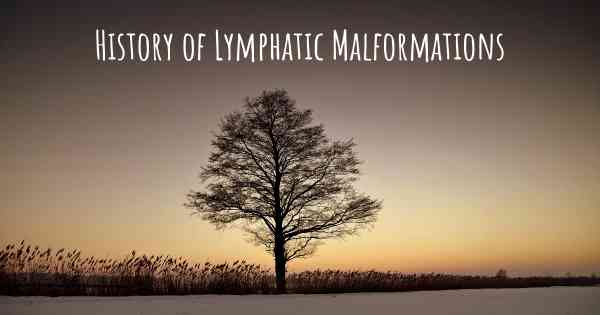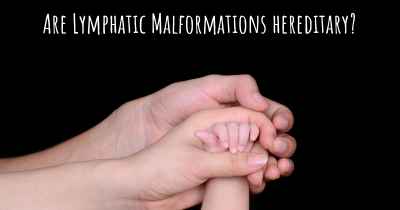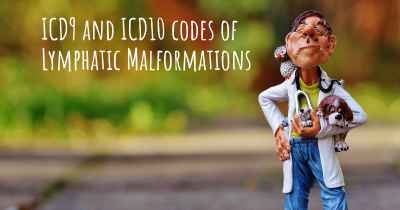What is the history of Lymphatic Malformations?
When were Lymphatic Malformations discovered? What is the story of this discovery? Was it a coincidence or not?

Lymphatic malformations, also known as lymphangiomas, are rare congenital abnormalities that affect the lymphatic system. These malformations arise from the abnormal development of lymphatic vessels, leading to the formation of cystic masses filled with lymphatic fluid. Lymphatic malformations can occur in various parts of the body, including the head and neck, chest, abdomen, and extremities.
Historical Background:
The history of lymphatic malformations dates back to ancient times, although the understanding of these conditions has evolved significantly over the years. The earliest recorded cases of lymphatic malformations can be traced back to ancient Egyptian and Greek civilizations.
In the 16th century, the Italian anatomist Gabriele Fallopius described a case of a neck swelling that was later identified as a lymphatic malformation. However, it was not until the 19th century that significant advancements were made in the understanding and treatment of these conditions.
19th Century:
In the early 1800s, the French physician Jean Cruveilhier made important contributions to the understanding of lymphatic malformations. He described these abnormalities as "cavernous lymphangiomas" and recognized their distinct characteristics, such as the presence of dilated lymphatic vessels.
Later in the 19th century, the German pathologist Rudolf Virchow further expanded the knowledge of lymphatic malformations. He classified these malformations into three types: simple lymphangioma, cavernous lymphangioma, and cystic lymphangioma. Virchow's classification system laid the foundation for future research and clinical management of lymphatic malformations.
20th Century:
During the 20th century, advancements in medical imaging techniques, such as ultrasound and magnetic resonance imaging (MRI), allowed for better visualization and diagnosis of lymphatic malformations. These imaging modalities helped clinicians understand the extent and characteristics of the malformations, aiding in treatment planning.
In the mid-20th century, surgical interventions became the primary treatment approach for lymphatic malformations. Surgeons aimed to remove the malformation completely or reduce its size to alleviate symptoms and improve the patient's quality of life. However, complete surgical excision was often challenging due to the intricate nature of lymphatic vessels and the risk of damaging vital structures.
Recent Advances:
In recent years, there have been significant advancements in the management of lymphatic malformations. The introduction of sclerotherapy, a minimally invasive procedure, has revolutionized the treatment approach. Sclerotherapy involves injecting a sclerosing agent into the malformation, causing the abnormal lymphatic vessels to shrink and collapse.
Furthermore, the development of targeted therapies, such as the use of sirolimus, has shown promising results in the treatment of lymphatic malformations. Sirolimus, an immunosuppressive drug, inhibits the abnormal growth of lymphatic vessels and reduces the size of the malformation.
Conclusion:
The history of lymphatic malformations spans centuries, with significant advancements made in understanding, diagnosing, and treating these conditions. From ancient civilizations to modern medicine, the knowledge and management of lymphatic malformations have evolved, leading to improved outcomes for affected individuals.








